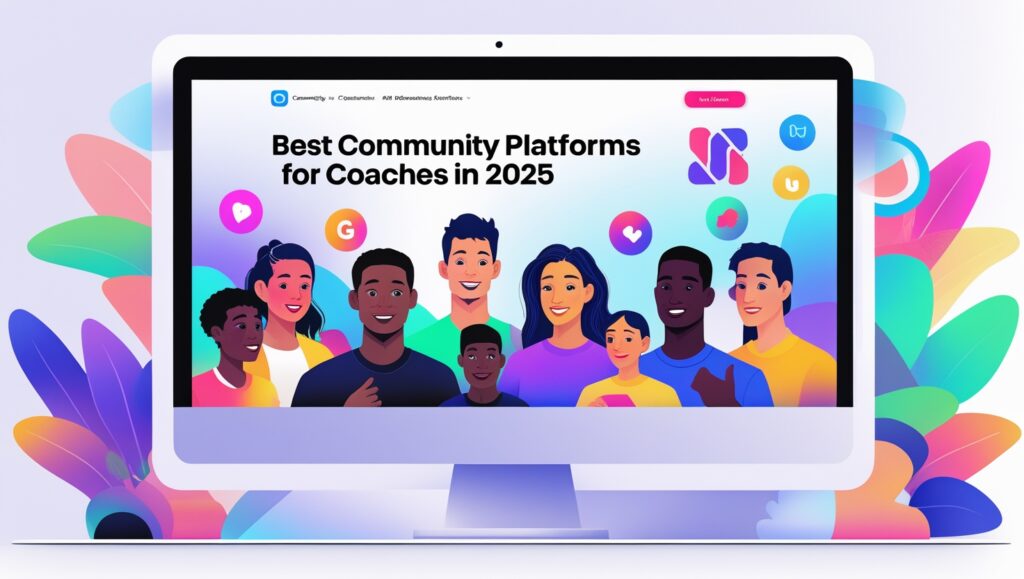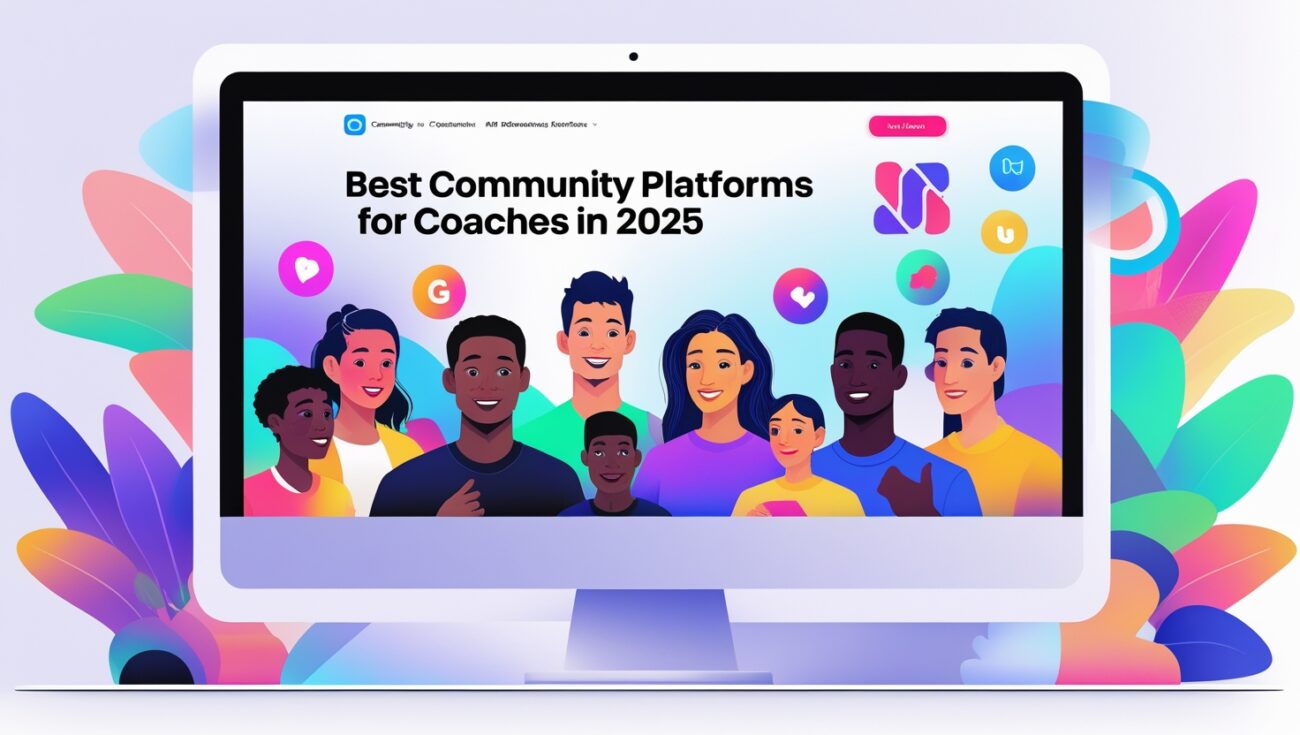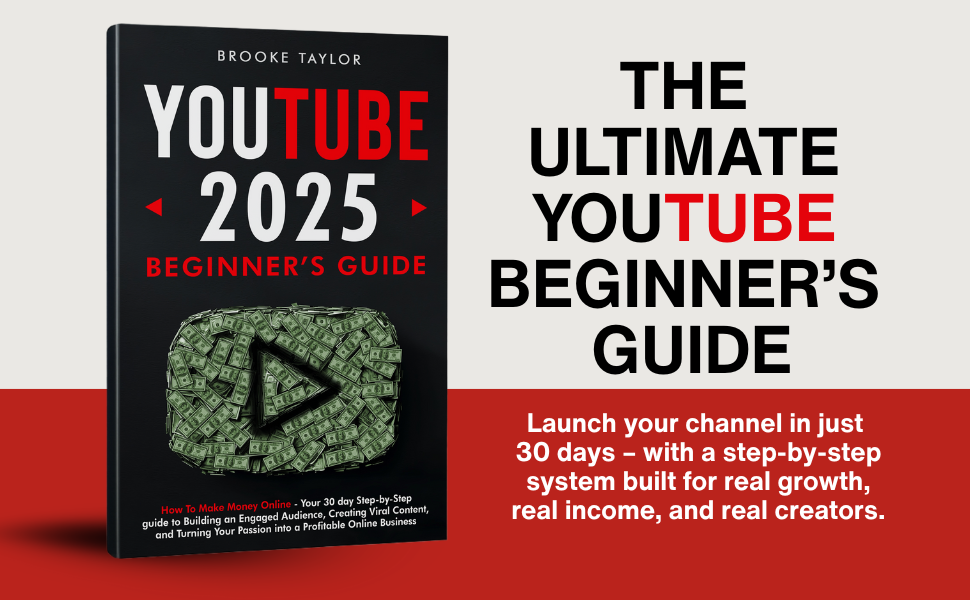Best Community Platforms for Coaches in 2025
As a coach, I know firsthand how powerful it is to have a strong, engaged community. But with so many platforms available, choosing the right one can feel overwhelming. I’ve personally tested multiple options over the years, and in this post, I’ll break down what I believe are the best community platforms for coaches in 2025 — including the one I personally use every day.
If you’re tired of juggling Facebook Groups, course platforms, and third-party apps just to stay connected with your clients, I promise there’s a better way. Let me walk you through what works, what doesn’t, and what I actually recommend.

Table of Contents
1. Skool – The All-in-One Platform I Use
Let’s start with the tool that changed everything for me — Skool. It’s clean, simple, and designed specifically for community-first coaching businesses. I run my coaching group and digital course inside Skool, and I haven’t looked back since switching.
Skool combines:
- A private community space
- A course area where I upload my content
- An events calendar for live coaching calls
- Built-in Stripe payments
- A gamified leaderboard that keeps members engaged
What I love is how everything happens in one place. I didn’t need to hire a tech expert or spend hours building funnels. I literally had my entire coaching hub live in one afternoon.
Try Skool through my affiliate link — if you’re serious about growing a coaching community, it’s worth every penny.
2. Circle – For Customizable Community Experiences
If you’re looking for more flexibility and design control, Circle is another great option. You can build beautiful spaces, organize content with spaces and topics, and create tiered memberships.
It’s great for coaches who want a fully branded experience and don’t mind getting their hands dirty with customization. That said, it takes longer to set up than Skool and might feel overwhelming if you’re not super tech-savvy.
3. Mighty Networks – Feature-Rich but Cluttered
Mighty Networks offers a full suite of tools — courses, memberships, mobile apps, and events. It’s a solid contender if you want to host everything under your brand name.
I tested it for a few weeks, and while it’s powerful, the interface felt a bit busy. User experience matters a lot, especially for clients who are new to online spaces. If your members are easily distracted, they might not stick around.
4. Facebook Groups – Still Useful, But Risky
I used to run my coaching community through Facebook Groups. It was easy to get started, but eventually I hit roadblocks — the algorithm, distractions, limited course delivery options, and worst of all, no control over the platform.
Facebook can shut down your group at any time, and there’s no direct monetization structure built in. It’s fine for free groups, but for premium coaching, I prefer a platform I own and control — like Skool.
5. Discord – Great for Tech-Savvy Coaches
If your coaching audience is younger or already familiar with Discord, it might be a solid option. You get voice channels, text threads, and real-time interaction.
But it lacks built-in tools for course delivery and scheduling. I found myself needing to connect too many apps, which led to more complexity. Discord is better suited for communities that thrive on fast-paced chat, not structured coaching.
Why I Chose Skool Over Everything Else
After trying so many platforms, I needed something that:
- Felt like a real community, not just a course portal
- Helped me organize my coaching offers without tech headaches
- Let me collect payments and manage members without third-party tools
Skool gave me all that — plus a space where my clients actually enjoy logging in. The simplicity helps people stay active, which increases my retention and revenue.
I now run my entire coaching business inside Skool. And because everything is in one place — content, calls, conversations, payments — I can focus on serving instead of setting up.
Click here to try Skool if you want a stress-free coaching platform that actually grows with you.
One thing I really appreciate about Skool is the clean user interface. When clients log in, there’s no confusion. They see the latest posts, upcoming calls, and their course progress all in one dashboard. That kind of simplicity helps reduce churn. I’ve noticed people are more likely to stay when they feel comfortable inside the platform.
Another benefit is Skool’s leaderboard system. I wasn’t sure it would matter at first, but the gamification really drives engagement. Members start posting, replying, and joining discussions just to climb the ranks. This creates an active group environment — and I don’t have to push people constantly to participate.
Payment setup is also a breeze. I connected my Stripe account to Skool in minutes, and now I can manage subscriptions directly. No extra tools like Gumroad, ThriveCart, or PayPal buttons. When someone joins, they get instant access, and everything runs automatically.
Skool also lets me create a free group and upsell later. That means I can build trust and community without asking for payment upfront, then offer a course or coaching package once members are engaged. This funnel-less approach has worked better for me than any complex marketing setup.
With other platforms like Circle or Mighty Networks, I always felt like I was piecing things together. Skool, on the other hand, feels like it was built for creators like me who want community and coaching under one roof. And the fact that I can manage everything without hiring a team is a big plus.
From an SEO perspective, Skool gives you a public group landing page that ranks in Google. That means you can attract members organically — something Kajabi and Facebook Groups don’t really offer. This feature alone makes it worth the price, especially if you’re focused on long-term growth.
Another area where Skool shines is hosting live coaching calls. I add my Zoom link to the group calendar, and everyone gets reminders. This keeps attendance high without needing email automations or extra tools. It’s a small feature that saves me a lot of time.
I’ve also seen that members consume more course content when it’s inside the same space as the community. They log in to see what’s new in the feed and end up watching another lesson. That’s harder to achieve when your course and community are on different platforms.
The mobile experience on Skool is smooth too. My clients can access everything from their phones without needing to download an app. That’s a win for busy professionals who want to catch up on lessons or comment in the group during breaks or travel.
If you’re thinking about monetization, Skool makes it easy to offer tiered memberships, coaching cohorts, or private groups. I started with one offer and later added more without needing a full rebrand or redesign. The platform grows with you.
Another reason I promote Skool is because of its generous affiliate program. I share my experience, and when someone signs up through my link, I earn monthly recurring commissions. That’s real passive income — from a tool I already love and use.
So if you’re a coach in 2025 looking to grow a strong, profitable community, I can honestly say Skool is the best platform I’ve found. It’s not just about the features — it’s about how it makes my life easier and keeps my clients coming back.
Join Skool through my affiliate link here and start building a coaching business that runs smoother and scales smarter.







One thought on “Best Community Platforms for Coaches in 2025”